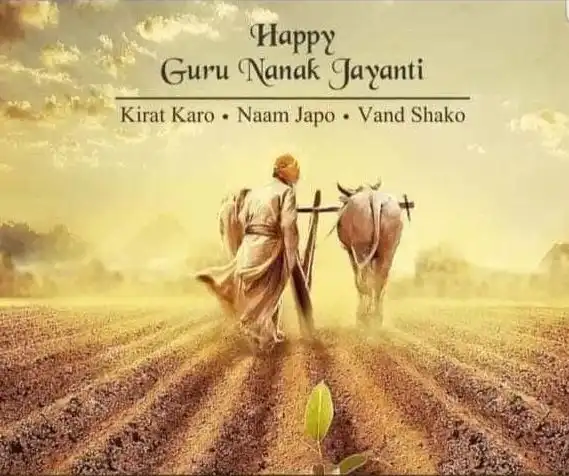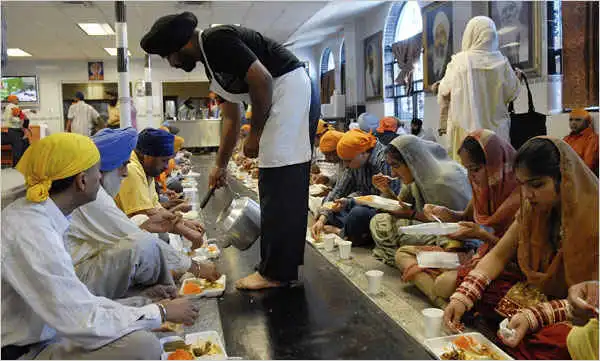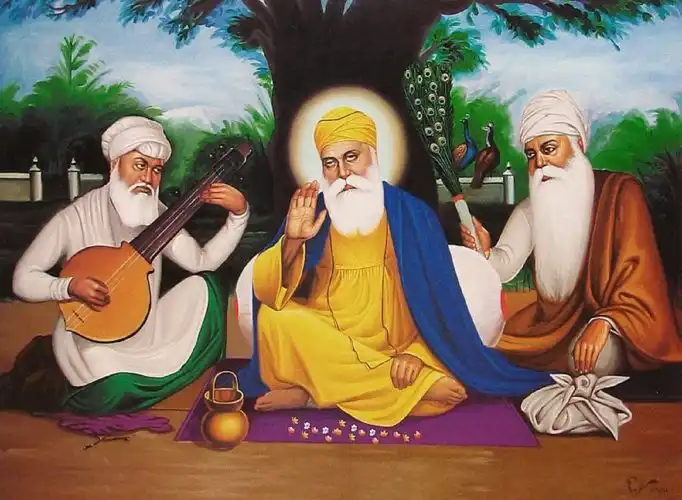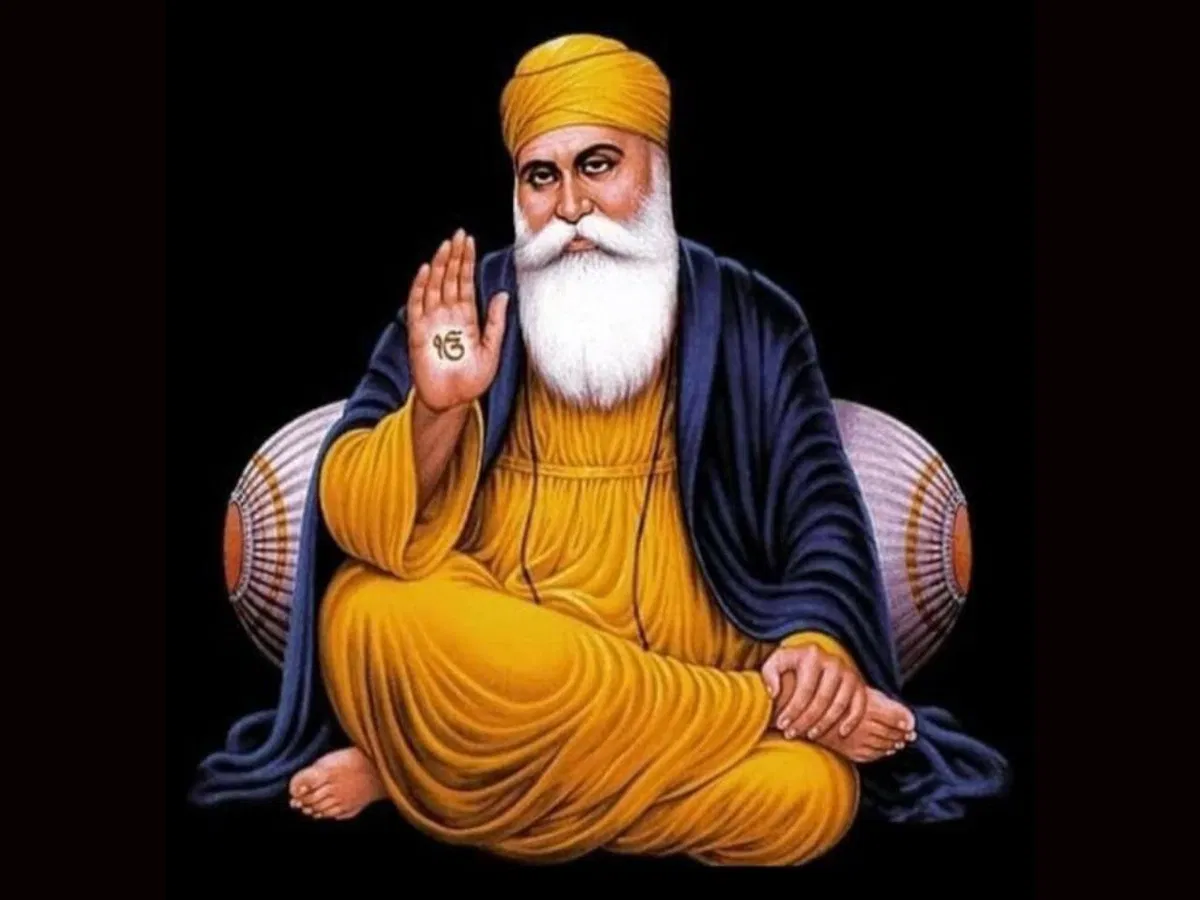Guru Nanak Jayanti, also known as Guru Nanak Gurpurab, is one of the most important festivals in the Sikh community. It marks the birth anniversary of Guru Nanak Dev Ji, the founder of Sikhism, and is celebrated with great devotion and enthusiasm worldwide. Let’s dive into the significance of this day and how it is celebrated.

Who Was Guru Nanak?
Guru Nanak Dev Ji was born in 1469 in a small village called Rai Bhoi Ki Talwandi, now known as Nankana Sahib in Pakistan. From an early age, Guru Nanak showed a deep spiritual connection and curiosity about the world. He is regarded as the first of the ten Sikh Gurus and laid the foundation of Sikhism, emphasising the importance of equality, love, and service to humanity. His teachings focused on believing in one God, living a truthful life, and treating everyone with respect, regardless of their caste, religion, or gender.

When Is Guru Nanak Jayanti Celebrated?
Guru Nanak Jayanti usually falls in November, but the exact date varies according to the lunar calendar. It is celebrated on the full moon day, known as Kartik Purnima. In 2024, the festival will be observed on November 15th.

The Significance of Guru Nanak Jayanti
The festival holds great importance for Sikhs as it commemorates the birth of their first Guru. It is not only a day to celebrate but also an opportunity to reflect on Guru Nanak’s teachings, which promote harmony, equality, and service. His philosophy is encapsulated in the three pillars of Sikhism:

- Naam Japo: Remember and meditate on the name of God.
- Kirat Karo: Live an honest life and work hard.
- Vand Chakko: Share with others and serve the community.
How Is Guru Nanak Jayanti Celebrated?
Guru Nanak Jayanti is celebrated with much zeal and devotion, particularly in Sikh communities across India and the world. Here are some of the common ways people observe the day:
1. Akhand Path
Celebrations begin two days before the actual Gurpurab with an Akhand Path. This is a 48-hour continuous, nonstop reading of the Guru Granth Sahib, the holy scripture of Sikhism, in Gurdwaras (Sikh temples) as a form of devotion to Guru Nanak and the Sikh faith.

2. Nagar Kirtan
One of the most striking features of the celebration is the Nagar Kirtan, a religious procession organised on the eve of Guru Nanak Jayanti. The procession is led by the Panj Piare, five beloved Sikhs, and is accompanied by the singing of hymns (kirtans), martial arts performances by Gatka teams, and a display of swordsmanship. The procession moves through the streets, and devotees fervently join in, carrying the holy scriptures in a decorated palanquin.

3. Prayers and Hymns
On the day of the Gurpurab, the celebrations start early, often at 4 or 5 am, with the singing of morning hymns, known as Asa Di Var. This is followed by reading more verses from the Guru Granth Sahib and sermons that highlight the teachings of Guru Nanak. These prayers, or Kirtans, continue throughout the day

4. Langar
One of the most significant aspects of Sikhism is Langar, the free community meal served at Gurdwaras. During Guru Nanak Jayanti, special Langars are organised where people of all communities and backgrounds are welcomed to sit together and eat. This practice embodies the message of equality and service that Guru Nanak advocated

Key Teachings of Guru Nanak
Guru Nanak’s teachings remain as relevant today as 500 years ago. Some of the key messages he spread include:
- Equality: Guru Nanak preached that all humans are equal, regardless of their religion, caste, or gender.

- One God: He emphasised the belief in one God, who is eternal and formless.

- Selfless Service: Guru Nanak taught that one should serve others selflessly, a practice observed in the form of Seva (voluntary service) in Sikhism.

- Honest Living: He encouraged people to earn a living through honest work and discouraged begging or dishonesty.

- Community: His teachings also promoted the concept of Sangat (community), where people come together in prayer and fellowship.

A Global Celebration
While Guru Nanak Jayanti is most widely celebrated in India, particularly in the states of Punjab and Haryana, it is also observed by Sikhs across the world. Countries like the UK, Canada, and the United States, with significant Sikh populations, witness vibrant celebrations with processions, prayers, and community meals. The spirit of the festival transcends borders and unites Sikhs globally in honour of their Guru.

Conclusion
Guru Nanak Jayanti is not just a festival; it is a day to remember the life and teachings of one of the most revered spiritual leaders in history. It is a time to reflect on values like equality, compassion, and service, which Guru Nanak championed. By celebrating this day, Sikhs and others around the world continue to spread his message of love and unity.
For more interesting articles, please visit www.kidzherald.com





